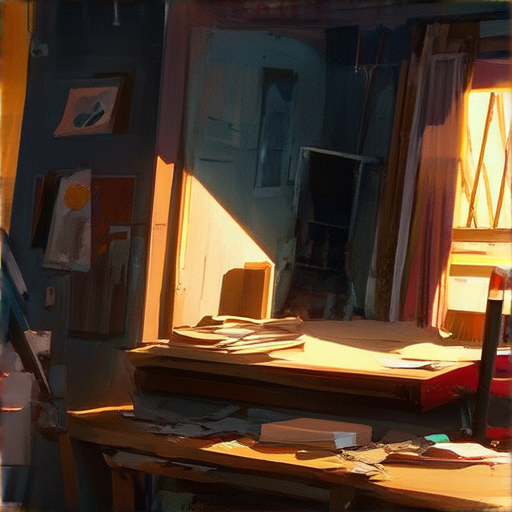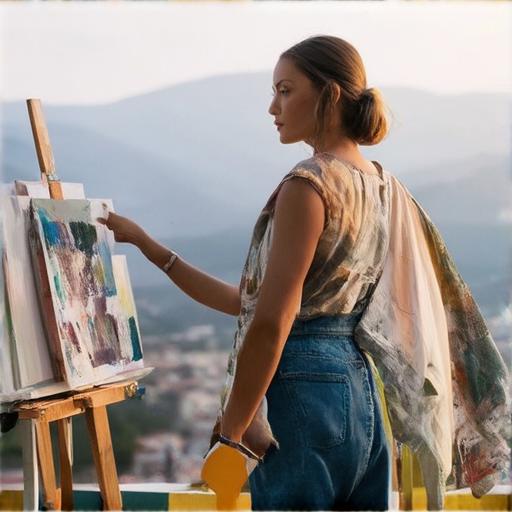As a skilled artist, continually pushing the boundaries of your creativity can lead to remarkable artistic growth and development. With numerous art techniques available, it’s essential to master those that elevate your work to new heights. From classical arts to modern styles, understanding the fundamentals of advanced art techniques is crucial for producing exceptional pieces. By exploring the diverse world of art, you’ll discover how to overcome challenges, stay motivated, and cultivate a unique style that sets you apart from others.
Whether you’re looking to refine your drawing skills, experiment with new mediums, or perfect your painting techniques, mastering advanced art techniques requires dedication, patience, and practice. In this comprehensive guide, we’ll delve into the world of advanced art techniques, covering topics such as the benefits of learning new techniques, common mistakes made by advanced artists, and strategies for overcoming creative blocks. By embracing these principles and staying inspired, you’ll unlock your full artistic potential and take your craft to new levels.

The Hardest Art Techniques to Master
Among various art techniques, some stand out for their complexity and difficulty to learn.
- Hyperrealism: This style involves creating incredibly realistic images that can deceive even the most discerning eye. To master hyperrealism, artists must possess exceptional attention to detail, color accuracy, and texture replication.
- Chiaroscuro: This Italian term refers to the use of strong contrasts between light and dark to create a sense of volume and depth in a two-dimensional image. Achieving convincing chiaroscuro requires a deep understanding of light sources, shading, and atmospheric perspective.
- Impasto: Characterized by thick layers of paint applied to the canvas, impasto creates a textured, three-dimensional effect. However, this technique demands great control over brushstrokes, color mixing, and surface preparation.
- Watercolor Wash: Watercolor painting involves transparent washes to achieve delicate, ethereal effects. However, mastering watercolor requires a thorough understanding of pigment interactions, paper selection, and subtle color gradations.
- Caricature: This comedic art form involves exaggerating facial features and body language to convey humor or satire. Caricaturists must balance realism with creative liberties, making it a challenging yet rewarding medium to master.
Key Factors Contributing to the Difficulty of These Art Techniques:
- Technical Skill: Each of these techniques demands a high level of technical proficiency, whether it’s mastering color theory, understanding light sources, or developing precise brushstrokes.
- Attention to Detail: Artists working in these styles must be meticulous in their execution, paying close attention to every aspect of their work, from texture to color palette.
- Practice and Patience: Developing expertise in these techniques takes time, dedication, and perseverance, as artists continually strive to refine their skills and push the boundaries of what is possible.
Overcoming the Challenges of Mastering Difficult Art Techniques:
- Break Down Complex Tasks into Manageable Steps: Divide intricate processes into smaller, achievable tasks to build confidence and momentum.
- Study the Work of Others: Analyze the techniques and strategies employed by experienced artists to gain insight and inspiration.
- Experiment and Take Risks: Don’t be afraid to try new approaches and take calculated risks – it’s often through experimentation that artists discover innovative solutions and breakthroughs.
Advancing Your Art Skills
Developing exceptional artistic skills requires dedication, persistence, and a well-structured approach.
- Observe and Study Real-Life Objects: Analyze the shapes, proportions, and textures of real-life objects to gain a deeper understanding of form and structure.
- Utilize Various Learning Platforms: Websites like Skillshare, Udemy, and YouTube offer diverse tutorials covering various techniques, styles, and mediums, allowing you to explore different approaches and find what suits you best.
- Enroll in Structured Courses: Pursue formal education or online programs that provide a clear roadmap for skill development, enabling you to build a solid foundation and track your progress effectively.
- Practice Consistently: Regular practice helps develop muscle memory and fine-tunes your skills, leading to significant improvements over time.
- Experiment and Take Risks: Don’t be afraid to try new techniques, mediums, or styles – experimentation can lead to unexpected breakthroughs and innovative discoveries.
- Join a Community or Find a Mentor: Collaborating with fellow artists, instructors, or experienced mentors can provide valuable feedback, support, and guidance, helping you stay motivated and inspired.
- Set Realistic Goals and Track Progress: Establish achievable objectives and regularly evaluate your growth, making adjustments as needed to ensure steady improvement.

Understanding Advanced Visual Arts
The term “advanced visual arts” refers to a specialized field within the broader realm of visual arts education. In this context, students delve deeper into various aspects of visual expression, exploring diverse mediums and techniques to cultivate their creative skills.
Key Characteristics of Advanced Visual Arts
- Depth of Exploration: Students engage in in-depth analysis and exploration of different artistic disciplines, including painting, sculpture, photography, printmaking, and digital art.
- Technical Proficiency: Students develop advanced technical skills through hands-on experience with various materials and tools, allowing them to express themselves effectively.
- Critical Thinking and Creativity: Students learn to critically evaluate their own work and that of others, fostering creativity and innovation in their artistic endeavors.
- Communication and Presentation: Students practice presenting their artwork to audiences, developing essential communication and presentation skills.
Benefits of Studying Advanced Visual Arts
- Improved Technical Skills: Students gain expertise in various artistic mediums, enabling them to tackle complex projects with confidence.
- Enhanced Critical Thinking and Problem-Solving Abilities: By analyzing and evaluating artworks, students develop critical thinking and problem-solving skills.
- Increased Creativity and Self-Expression: Advanced visual arts encourages students to explore their unique voice and style, promoting self-expression and creativity.
- Preparation for Careers in the Arts: A solid foundation in advanced visual arts prepares students for careers in fine arts, graphic design, illustration, and other related fields.
Role of Contemporary Media and Techniques
In today’s fast-paced world, advanced visual arts incorporates cutting-edge technologies and mediums, such as digital art software, 3D printing, and virtual reality. These innovative tools enable students to push the boundaries of their creativity, experimenting with novel forms of artistic expression.
Importance of Collaboration and Feedback
Throughout the advanced visual arts program, students engage in collaborative projects, sharing ideas and receiving constructive feedback from peers and instructors. This supportive environment fosters growth, encouraging students to take risks and refine their artistic vision.
Conclusion
Advanced visual arts offers a rich and rewarding educational experience, empowering students to explore their creative potential and develop advanced technical skills. By embracing diverse mediums and techniques, students can unlock their full artistic potential and prepare for successful careers in the arts.
The Seven Main Types of Art
The world of art encompasses a diverse array of creative expressions, each with its unique characteristics and forms. Here’s a breakdown of the seven primary types of art:
- Visual Arts: This category includes painting, drawing, sculpture, photography, and other forms of visual expression.
- Dance: A highly expressive and dynamic art form that involves movement, rhythm, and musicality.
- Theater: Encompasses various forms of live performances, including plays, musicals, and dance recitals.
- Music: Comprises a vast range of genres, styles, and instruments, from classical to contemporary.
: Includes poetry, novels, short stories, and other written works that convey meaning and emotion. - Cinema: Refers to film and video production, encompassing narrative storytelling, documentary filmmaking, and experimental techniques.
- Performing Arts: A broad term that encompasses theater, dance, music, and other live performances that engage audiences emotionally and intellectually.
These seven categories represent the fundamental building blocks of artistic expression, each offering a distinct way to communicate ideas, evoke emotions, and connect with others. By understanding these primary types of art, we can gain a deeper appreciation for the diversity and richness of human creativity.
Understanding Art Techniques
There are numerous art techniques employed by artists across various mediums, each offering unique creative possibilities and challenges. Here’s an overview of some prominent art techniques:
- Drawing Techniques: Artists utilize various drawing techniques, including hatching, cross-hatching, stippling, and gesture drawing.
- Painting Techniques: Painting involves multiple techniques, such as layering, glazing, scumbling, and impasto.
- Sculpture Techniques: Sculptors employ methods like modeling, carving, casting, and assembling to create three-dimensional artworks.
- Printmaking Techniques: Printmakers use various techniques, including relief printing, intaglio printing, screen printing, and etching.
- Photography Techniques: Photographers apply different techniques, such as composition, lighting, focus, and post-processing, to capture and enhance images.
Combining Techniques for Enhanced Expression
Artists frequently combine multiple techniques to create innovative and expressive works. By merging different mediums and styles, artists can push boundaries, experiment with new forms, and convey complex emotions and ideas.
Key Considerations for Effective Technique Selection
When choosing an art technique, consider factors such as:
- Personal style and preference
- Medium and material limitations
- Desired outcome and message
- Time constraints and available resources
By understanding and mastering various art techniques, artists can unlock new creative avenues, develop their skills, and produce visually stunning and thought-provoking artworks.
The Six Classical Arts
The six classical arts encompass a broad spectrum of creative disciplines that have been revered throughout history for their beauty, elegance, and ability to evoke emotions. These arts have played a significant role in shaping human culture and continue to influence contemporary art forms.
Definition and Significance
The six classical arts are:
- Arte
- Musica
- Poesia
- Danza
- Grammatike
- Rhetorike
These arts were first identified by ancient Greek philosophers, who recognized their importance in fostering intellectual and artistic growth. By mastering these disciplines, individuals could develop a well-rounded education and cultivate their critical thinking skills.
Characteristics of Each Art Form
Each of the six classical arts has its unique characteristics, which contribute to their enduring appeal:
- Arte: A visual art form characterized by its aesthetic appeal, often conveying emotions and ideas through color, composition, and technique.
- Musica: An auditory art form that uses sound waves to create melodies, harmonies, and rhythms, evoking emotions and inspiring movement.
- Poesia:: A literary art form that employs language to express thoughts, feelings, and experiences, often using metaphor, imagery, and symbolism.
- Danza:: A physical art form that combines movement, expression, and rhythm to convey emotions and tell stories.
- Grammatike:: A linguistic art form that involves the study and application of language rules, syntax, and semantics to communicate effectively.
- Rhetorike:: A persuasive art form that utilizes language, logic, and emotional appeals to convince audiences and persuade them to adopt a particular point of view.
Importance in Modern Times
Despite the rise of digital media and modern technologies, the six classical arts remain essential components of a well-rounded education and cultural heritage. They provide a foundation for understanding the complexities of human experience, foster creativity and self-expression, and offer a means of communication that transcends language barriers.
By embracing these timeless arts, individuals can develop a deeper appreciation for the beauty and diversity of human culture, cultivate their critical thinking skills, and enrich their lives with a richer understanding of the world around them.

0 Comments